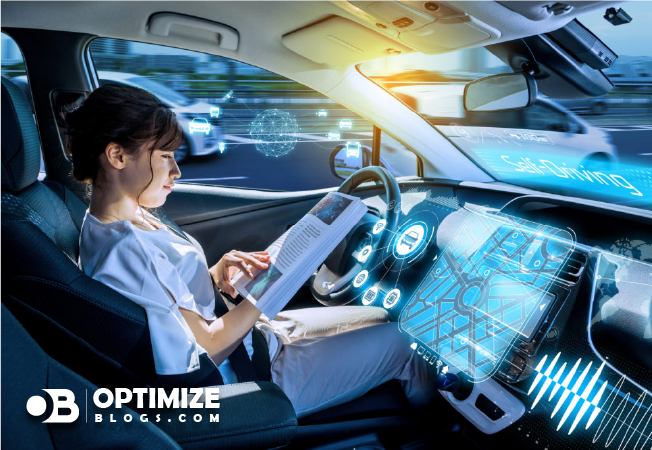
Autonomous driving, once a futuristic concept, is rapidly becoming a reality on our roads. As self-driving vehicles continue to evolve and integrate into our transportation systems, it raises important questions about the readiness of society, infrastructure, and technology to embrace this transformative shift. In this comprehensive blog post, we'll explore the current state of autonomous driving, the benefit and challenges it presents, and whether we are truly prepared for a future where self-driving cars are the norm.
The Current State of Autonomous Driving
Level of Automation
Autonomous driving systems are typically classified into six levels of automation, ranging from Level 0 (no automation) to Level 5 (full automation). Here's a brief overview:
Level 0: No automation. The driver is fully responsible for all aspects of driving.
Level 1: Driver assistance. Basic functions like adaptive cruise control and lane-keeping assist are available, but the driver must remain engaged.
Level 2: Partial automation. The vehicle can control both steering and acceleration/deceleration under certain conditions, but the driver must still monitor the road and be ready to take over.
Level 3: Conditional automation. The vehicle can handle most aspects of driving under specific conditions, and the driver can disengage from monitoring but must be ready to intervene when prompted.
Level 4: High automation. The vehicle can operate autonomously in specific scenarios, such as highway driving, but may require driver intervention in exceptional circumstances.
Level 5: Full automation. The vehicle can operate without human intervention in all driving scenarios and conditions.
Current Implementations
As of the last update in 2021, we are primarily at Level 2 and Level 3 automation in real-world implementations. Companies like Tesla, Waymo, and General Motors are testing Level 3 autonomous systems in certain regions, allowing drivers to take their hands off the wheel under specific circumstances.
The Benefits of Autonomous Driving
Safety Improvements
One of the most significant promises of autonomous driving is a reduction in traffic accidents and fatalities. Autonomous vehicles are less prone to human errors, such as distracted driving or impaired judgment, which are leading causes of accidents.
Increased Mobility
Autonomous vehicles can provide greater mobility for individuals who are unable to drive due to age, disability, or other reasons. This technology has the potential to enhance accessibility for all.
Reduced Traffic Congestion
With more efficient routing and coordinated driving patterns, autonomous vehicles can reduce traffic congestion, saving time and fuel for everyone on the road.
Environmental Benefits
Autonomous driving systems can optimize driving patterns for fuel efficiency, potentially reducing emissions and the overall environmental impact of transportation.
Challenges and Concerns
Technological Challenges
Autonomous vehicles face technical hurdles, including the development of reliable sensors and AI systems, cybersecurity concerns, and the need for robust communication infrastructure.
Ethical Dilemmas
Autonomous vehicles may face complex ethical dilemmas when it comes to decision-making in emergency situations. For example, should a self-driving car prioritize the safety of its occupants or pedestrians?
Job Displacement
As automation increases in transportation, there are concerns about job displacement for drivers and the need for workforce retraining.
Legal and Liability Issues
Determining liability in the event of an autonomous vehicle accident remains a significant challenge. Laws and regulations regarding autonomous driving are also evolving.
Infrastructure and Readiness
Road Infrastructure
Autonomous vehicles rely on high-quality road infrastructure, clear road markings, and advanced traffic management systems. Many regions are still working to upgrade their infrastructure to support autonomous driving.
Cybersecurity
Ensuring the cybersecurity of autonomous vehicles and the entire transportation ecosystem is critical to prevent hacking and unauthorized access to vehicles' systems.
Education and Training
Drivers, pedestrians, and law enforcement officers need education and training to interact safely with autonomous vehicles and understand their capabilities and limitations.
The Role of Regulation
Regulatory frameworks are essential to ensure the safe and responsible deployment of autonomous vehicles. Governments and regulatory bodies must establish standards for technology, liability, insurance, and safety testing.
Conclusion: Are We Ready?
The future of autonomous driving holds incredible promise, from improved safety to increased mobility and reduced traffic congestion. However, there are significant challenges, including technical, ethical, and regulatory considerations that need to be addressed. The readiness for widespread autonomous driving depends on a collaborative effort involving technology developers, policymakers, infrastructure providers, and society as a whole.
While we are making remarkable progress in autonomous driving technology, it is essential to strike a balance between innovation and safety. Society's readiness for autonomous driving ultimately depends on the successful resolution of technical, ethical, legal, and infrastructure-related challenges.





